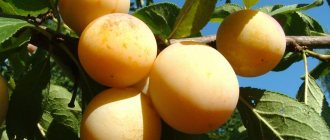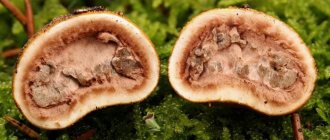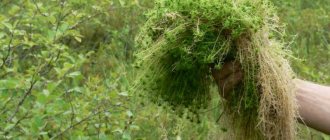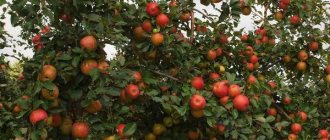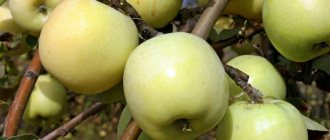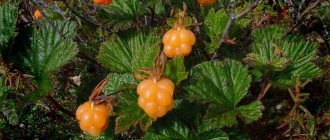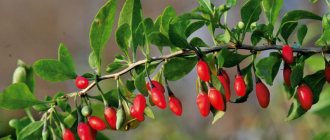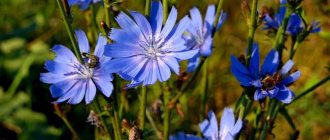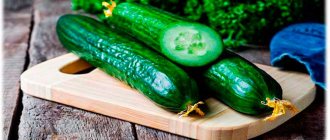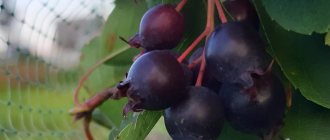Common quince is one of the most ancient fruit crops with which humanity is familiar. Her homeland is the mountainous regions of Armenia. She lives here for about 5 thousand years. Gradually they became acquainted with it and began to cultivate it in Asia Minor, Ancient Greece, and the Roman Empire. Now it can be found throughout the Caucasus and Transcaucasia, the southern regions of Russia, Central Asia, the Mediterranean, Europe, Australia, Africa, with the exception of the central part, and the Western Hemisphere. Amateur gardeners are trying to grow it in the central zone of our country.
The plant also goes by other names: gunna, bedriyanka, quitovaya tree, bodryana, oblong quince. The Latin name is Cydonia oblonga, derived from the Cretan city of Sedona, where it was highly valued and was part of the culture.
What does it look like
The photo shows an adult fruit-bearing quince tree
Quince grows as a tree or shrub from 1.5 to 6 meters in height. The bark on the trunks is smooth. Young branches are fleecy. The leaves are dark green in color, grayish pubescent below, with a smooth edge and short petioles. The flowers on the branches are arranged in a single order, regular, five-petaled pale pink on low stalks. The fruits have the appearance of an apple or pear and are colored in different shades of yellow. Young ones are velvety, ripe ones are smooth to the touch. Their taste is tart, astringent, sweetish, the flesh is not juicy and hard due to the presence of a large number of stony cells. The oval-shaped seeds are brown. The tree blooms from May to June, and the fruits ripen in late autumn in September - October.
What is quince
Quince is a fruit crop of woody plants of the Rosaceae family. The Common Quince species is the only representative of this genus. The tree can reach a height of 5 m.
Where does quince grow? The tree's birthplace is considered to be mountainous Armenia, from which it came to Asia Minor, then to Ancient Greece and Rome. In nature, the area of distribution of the fruit crop covered the Caucasus, Transcaucasia and Turkmenistan. Currently, the quince tree is successfully grown in the south of the country and in the Moscow region.
Quince grows in forests along the edges, in clearings and clearings, on dry soil. It can grow for a long time with a lack of moisture and without irrigation. It also tolerates excessive moisture; for example, in the Astrakhan region, quince, compared to other fruit trees, tolerates floods better.
Quince, which grows on heavy loam, bears fruit best. The fruits of cultivated trees reach several kg, and those of wild trees - no more than 100 g.
Reproduction occurs by seeds, cuttings, root shoots and grafting.
Useful properties of quince
The chemical composition of quince is very rich. Each part of it is unique and has a significant difference. They complement each other perfectly, which together gives the fruit originality.
The peel of the fruit is saturated with dyes, vitamins, tannids, catechins, enanthic and pelargone ethyl esters, which enrich them with an incomparable smell.
The pulp of the fruit contains:
- sugar;
- fructose;
- citric and malic acids;
- tannins;
- essential oil;
- vitamins A, B1, B2, C, P;
- phosphorus;
- calcium;
- magnesium;
- potassium;
- iron;
- catechins with P-vitamin activity.
With the help of vitamins P and C, excess oxalic acid is evacuated from the body and the walls of blood vessels are strengthened. Pectins found in the pulp absorb and remove radioactive elements and heavy metals that are harmful to the human body. Quince pulp is a choleretic agent and also rids the body of excess fluid.
In addition, eating quince products has a beneficial effect on intestinal function and accelerates blood clotting. Medicines made from it are a tonic, antibacterial, and astringent.
The seeds are also rich in various elements: fatty oils, which contain myristic and isooleic acid, tannins, emulsin enzyme, mucus, highly soluble in water, starch, amygdalin glycoside. This allows them to be used for medicinal purposes as an emollient and expectorant for respiratory diseases, as well as as a carrier and enveloping agent. A decoction is used for this.
Freshly squeezed quince juice is rich in sugar, malic acid, and gum. In addition, the fruits and seeds are used in the textile industry. Wood, which is easily polished, is valued in the manufacture of souvenirs and various carved crafts.
Uses of Chaenomelis
Japanese quince in landscape design is most often used to create decorative flowering borders and low hedges. Blooming quince is stunningly beautiful in the design of an alpine hill or Japanese garden. Decorative quince is also very impressive in single plantings, in the company of perennial flowers or in a group of shrubs along with golden currants, barberry, weigela, forsythia, hawthorn and others.
Quince is a plant valued not only for its beauty; its small, cute fruits are very fragrant, tasty, and healthy. They are collected in the fall, as they ripen, before the onset of cold weather, in dry sunny weather. Frosts can ruin their taste.
Quince fruits contain a lot of various vitamins (especially C) and contain tannins. They help fight colds and boost immunity. There are also pectins, which reduce cholesterol levels, remove heavy metal salts and some other toxic substances from the body.
Marmalades, jams, and marmalades are prepared from quince fruits. Used to add to preparations made from slightly acidic fruits.
Quince has not only beneficial properties, but also contraindications. Thus, due to the presence of tannins, it should not be consumed by people suffering from constipation. Fresh fruit pulp can irritate the walls of the stomach, therefore it is contraindicated for gastric diseases. The seeds can cause poisoning and should not be eaten.
So we met an amazingly beautiful and useful plant. Growing Japanese quince will not cause much trouble. By following simple rules, you will ensure a chic decoration of the site for many years and pamper yourself with healthy aromatic fruits. Look how wonderful the Japanese quince is in the photo. Are you still in doubt?
Contraindications
Like any herbal remedy, beryanka is not only useful, but also harmful in some cases. You cannot crush, chew or brew damaged seeds, as they contain amygdalin, which, in combination with vitamin C, has a harmful effect (provokes poisoning). Those suffering from stomach and duodenal ulcers, chronic constipation, pleurisy, and personal intolerance should minimize the consumption of fresh fruits and juice. The larynx and vocal cords can also be damaged by excessive consumption of these products.
Growing
Quince grows well in areas with a flat surface, protected from the wind, with a slight southern slope to the east and west . You can’t plant it in low places, as air stagnation occurs. Trees are planted at a distance of 4-8 meters from each other, since the crop is vigorous and requires a large feeding area for full development. But even if all the necessary requirements are met, after 7-8 years the grown trees shade the food area intended for them.
Quinces are planted in the spring in March-April, depending on local conditions, or in the fall (two weeks before the onset of frosty weather).
Preparation and planting of seedlings is the same for all fruit crops. With the exception of a hole that is dug at least 70 cm wide and deep. You can grow quince using various techniques.
Cuttings
The vegetative method is the most reliable. It retains all the features of the variety. For this, green or lignified cuttings are used.
Young branches are cut at the beginning of summer, in the morning, when it is not yet so hot. Each of them must have at least 2-3 internodes and a heel about 1 cm long, which is treated with any growth-stimulating agent (for example, Kornevin). The prepared twigs are placed at an angle at a distance of 6 cm from each other in wet sand mixed with peat in a 3:1 ratio. For rooting, they will need a little more than a month at a temperature of 20 to 25 degrees C. But we should not forget that only 1/3 of the planting material will be accepted. Then the seedlings are transferred to a permanent place of growth.
Lignified cuttings are rooted in a greenhouse with high humidity. They are selected from the lower part of the plant: they are the healthiest and strongest in appearance. The twigs are divided into pieces from 20 to 30 cm, not forgetting to ensure that the lower cut is close to the bud located above the ground, and also placed obliquely in peat with sand. The cuttings are placed every 10-15 cm, and a distance of 40 cm is made between the rows. The bud is covered with substrate, when the seedling takes root, the ground is leveled, watered, and mulched. With careful care, the cuttings will take root by autumn. In open ground, 1/3 of the planting material takes root, in a greenhouse - 2/3. They are transferred to a permanent place after 12 months, and after 3-4 years there will be the first harvest.
Layerings
One of the most reliable methods of reproduction. They are usually made horizontal or arched. In autumn, low-lying young branches (no older than 2 years) are cut, bent to the ground, laid at the bottom of a groove about 10 cm deep, pinned, and covered with earth. By spring, the layering will take root and produce vertical shoots.
When they grow up to 20 cm, they should be hilled up to half their height. They water it all summer, remove weeds, and at the end of the heat, the newly formed plants are separated from the mother bush and transferred to a place designated for them. The seedlings turn out strong and healthy. The distance between them should be 1.5 meters.
Arc-shaped layering is obtained as follows: in the spring, grooves are made near the main plant (no closer than 70 cm), shoots are placed in them, fixed, watered, covered with earth, compacted, the apical part is brought out into a vertical position.
Root suckers
For propagation, quince shoots with a length of at least 15 cm and a thickness of 1 cm are used. In spring or autumn, the shoots are separated from the mother bush and placed vertically at a distance of one meter. The ground around the seedling is watered abundantly and mulched. The disadvantage of this method is that the root system of the tree will be weak and the fruits will be smaller.
From the seed
To propagate in this way, take ripened fruits taken from the tree, allow them to mature for another month, and remove the brown seeds. Then they are washed with warm water, laid out in one layer, and dried at a comfortable room temperature. They are suitable for use within six months.
It is better to do this in the fall, having previously carried out 2-3 months of stratification. Prepared seeds are planted in open ground in October. To do this, make a furrow 3 cm deep, place planting material in it (100 pieces per 1 meter), and mulch. The distance between the grooves is 25 cm. As the seedlings grow, at the stage of 10 and 20 cm, two thinnings are made.
For spring sowing, stratification begins in winter. December seeds are placed in peat pots. February - in open ground.
Before stratification they are kept in water for 6 hours. Then mixed with clean coarse wet sand in a ratio of 1:3 and placed in a refrigerator or similar place for 2-3 months, periodically wetting and stirring. Half of them are guaranteed to rise.
After stratification is completed, the hatched seeds are sown several at a time in a container to a depth of about 5 cm, not forgetting to water carefully. Two weeks before planting in open ground, hardening begins. The area designated for this is dug up to a depth of 30 cm, pots with seedlings are placed in the ground at a distance of 15-20 cm from each other, watered and mulched. When real leaves appear, thin out the first time, after 15-20 days - the second time. Rooted and grown seedlings (40 cm) are transferred to a permanent place in the fall. The weak are given time to gain strength and grow up.
Graft
For this procedure, seedlings (rootstocks) are grown. In the summer, a favorite cultivar is implanted on them (budding is done), that is, a single bud with a small piece of wood is transferred. For this purpose, seeds of winter-hardy varieties are used. This is done in the second year during the rapid movement of juices.
Apple, pear and chaenomeles trees can be grafted onto the quince itself.
Reproduction methods
Several methods are used to propagate quince.
Propagation by seeds
This method is considered the simplest and most effective. To carry it out, you need to plant the seeds of the plant in the soil in the fall. Over the winter, the seeds will have time to go through the process of stratification, and by spring young shoots will appear.
Propagation by cuttings
To preserve the varietal trait, the method of propagation by cuttings is used. To do this, it is necessary to collect cuttings of the crop in the spring, and then root them in a mixture of sand and peat, and plant them in the soil in the fall.
Reproduction by layering
With this method, the lower young shoot is pressed to the ground and fixed with special staples. In summer, the gardener needs to ensure that the soil does not dry out. It is also important to constantly hill up the plant. With the onset of spring, the daughter cuttings are separated from the mother plant.
Reproduction by division
This method reduces the number of fruits in the first year after division. Gardeners readily use this method, as it allows them to quickly obtain new plants with a well-developed root system.
Care
Trimming
Using this procedure, a tree crown is formed, consisting of 8-10 main branches located evenly and receiving a sufficient amount of light. Usually there are from 8 to 10 of them. In 3-4 years, a full-fledged plant is obtained.
- Formation begins on one-year-old seedlings. Measure a trunk 60 cm high from the ground, count 7-8 buds up and trim. The first tier consists of 4-5 branches located every 10-15 cm. Then they begin to form the second layer, spaced 30-40 cm from each other at an angle of at least 45 degrees relative to the trunk.
- For a two-year-old tree, first shorten the lower skeletal branches of the first tier to 50-60 cm. The rest of the pruning is done in the same way.
- In the third year, the crown is already formed. Young developed trees are pruned lightly during this period. Only branches growing into the middle of the crown, rubbing, intertwining, interfering, or shading each other are removed.
Quince fruits are formed at the ends of strong annual branches, and in the lower part the flower buds are dormant. As a result, these areas become bare, so mature shoots are cut off by 1/4 - 1/3 of their length every year.
Rapid fruiting slows down the development of the tree. You can give an impetus to the resumption of growth by shortening the skeletal branches to old wood; in addition, living pruning of quince is carried out annually, which gives a good increase.
The mature tree develops inactively, and tops appear. In such cases, it is pruned according to its condition. Fortunately, quince has a high regenerative potential, so in the spring many buds that have been dormant for the time being can wake up. Due to them, the crown will be completely rejuvenated.
It is important to remember that timely and constant care prolongs the life of the tree and improves fruiting.
And lastly, quince is pruned, like other plants, in the spring, before the sap begins to flow. At the end of the procedure, the wounds are cleaned with a sharp knife and covered with garden varnish.
Top dressing
For the full development of quinces, fertilizers are applied. In autumn, large doses are given to accumulate a supply of nutrients in the soil. At the beginning of summer, nitrogen fertilizers are preferred, in the second half - potassium-phosphorus fertilizers.
Description
Japan is considered to be the birthplace of quince. The plant appeared on the territory of this country more than four thousand years ago.
250 years ago in Western Europe, quince was grown exclusively as an ornamental crop. It was only in the 20th century that its taste qualities were assessed and its health benefits were identified, as a result of which quince began to be grown as a fruit and berry crop.
Chaenomeles mainly grows in Japan, and is found wild in Western China and Korea. Japanese quince grows in Moldova, Russia, Belarus, Crimea, Ukraine and the Caucasus. Japanese quince can also be found in Europe and Central Asia.
The corollas of the flowers are painted in a beautiful rich orange color and, under favorable conditions, reach four centimeters in diameter. Flowers have a large number of stamens. As for the pistils, they are fused at the base.
The petals are obovate in shape, the sepals are almost rounded, and inside they have brown pubescence.
The fruit is a false yellow apple, almost spherical in shape, up to four cm in diameter. The fruits have pubescent skin and are distinguished by an exquisite subtle aroma of lemon and other citrus fruits.
Usually the weight of the fruit reaches 100-200 grams.
The fruits are valued because they are rich in ascorbic acid and contain a lot of iron.
There are several legends and beliefs associated with Japanese quince. One of the legends says that the king had an only daughter, young Quince, whose beauty conquered King Gorius. And since he was a sorcerer, he decided to make a beautiful girl fall in love with him, and subsequently take possession of the entire kingdom. He came up with an insidious plan - to kill the girl and her father. The king found out about this and told his daughter. Then Quince decided to take revenge on Goria. She sent him a letter asking him to meet. Gory hugged the beauty, after which she plunged a dagger into his heart. Blood dripped from the dagger onto the ground and low Japanese quince bushes grew in this place. Quince blooms in spring and its flowers look like droplets of blood.
Since ancient times, quince has been considered a symbol of fertility, marriage and love.
Varieties
Teplovskaya
Bred in Astrakhan, it is productive and tolerates cold winters well. The fruits are apple-shaped, yellow in color, small in size with dense pulp, in which there are many stony inclusions located around the core. They keep well for 4 months.
Muscat
An unpretentious, medium-sized variety that easily adapts to different conditions. Resistant to frost and prolonged droughts. Grows on poor soils. He gets sick extremely rarely. The fruits are small (250 g) covered with fluff, reminiscent of felt. The pulp is light, somewhat harsh, with fibers, sweet with a pleasant sourness. The harvest is collected in September-October 45 kg per specimen.
Collective
Resists frost and drought, productive. Fruits in the form of apples of bright yellow color with light flesh with a small content of stony inclusions are collected from low trees. The fruits are stored for up to 3 months.
Rumo
The variety is popular among gardeners. The trees are of medium height, immune to diseases and severe frosts, with oval fruits (sometimes 500 g) and juicy, sweet and sour, non-astringent pulp. 70 kg of fruit are harvested from each tree. The harvest begins at the end of September.
Kuban harvest
The name speaks for itself. Fruits weighing up to 500 g are harvested from one tree with rough, juicy, cream-colored pulp that is aromatic and has a sweet and sour taste. The variety is resistant to heat, severe frosts, and pests. The harvest is harvested at the end of September and stored for a long time.
Golden
A small tree with thin intertwining branches and a spherical crown. The fruits are similar to an apple, slightly pubescent, weigh 200-400 g. Their flesh is hard and cream-colored. The harvest is harvested in the last ten days of September. One tree produces 40 kg of fruit.
Anzherskaya
French high-yielding variety. It resists fungal diseases well. The apple-shaped fruits have a smooth, lemon-colored skin with firm flesh and granules around the core that ripen quickly. They are consumed fresh and processed, stored for 60 days.
An excellent pupil
The variety was bred in the Nikitsky Botanical Garden. Trees of medium height with a luxurious crown. They love nutritious soils and give birth to up to 45 kg each. Heroically survives drought and severe frosts, but responds to abundant watering. Gives stable harvests for about 30 years. Ripens in the first ten days of October. Stores for 3 months.
Beretsky
This tall variety with a pyramidal crown was obtained in Hungary. Large thin-skinned fruits weighing 250 g are similar to a pear, ripen in October, but do not fall off the tree. They remain unchanged for 3 months. Fruiting occurs at the 3rd year of life.
Krasnoslobodskaya
The variety is productive, with average winter hardiness. The low-growing trees have a sparse spreading crown, the fruits are apple-shaped, ribbed with bright yellow, aromatic skin. The pulp is light, dense, juicy without stony formations. Shelf life 3 months.
Crimean early
Trees of medium height with a neat round crown begin to bear fruit within 3 years. The fruits are smooth, bright yellow in color with a sweet and sour tart taste. Ripeness occurs at the end of September. 40 kg of quince are harvested from one tree. The fruits do not respond well to long-distance transportation, so each specimen is packed in paper.
Ilmennaya
Winter hardiness is average, good yield. Round, large fruits with bright yellow skin. There are few stony particles in the sweet and sour pulp. Fruits are delicious both fresh and processed.
Diseases
Quidonia suffers greatly from a fungal infection, which leads to the death of the ovaries. It survives the winter on infested trees and dried fruit. At the beginning of the disease, the leaves become covered with brown spots. Gradually growing, they close the boundaries and occupy the entire surface. During the flowering period, fungal spores penetrate the stigmas, where they take root and take root in the young ovary, destroying it. To a lesser extent, the plant suffers from fruit rot and brownish leaves.
Struggle
In order for the tree to be healthy and produce a harvest, it is necessary to promptly pay attention to lesions and take the following preventive measures:
- Collect and destroy dry parts on the tree: fruits, branches, to prevent the death of the ovaries, the appearance of leaf-mining moths, and the appearance of brown spots.
- Before flowering, the tree is treated with a 0.15% solution of dipterex and 0.1% foundationol (against leaf-laminating moths and ovary rotting).
- At the time of flowering, 0.8% benomyl is used to prevent the death of embryos.
- At the end of this period it is combined with 0.12% dipterex. This helps to cope with rotting of the future crop, browning of leaves and other troubles.
- If oidium is found on the tree, then the treatment described in the previous paragraph is repeated after two weeks.
Many different dishes are prepared from bodryana. Let's list just a few of them.
Recipes
Compote
Well-ripened fruits are suitable for it. They are washed thoroughly, the core is removed, cut into small cubes (2-3 cm), poured with boiling water, and kept in it for half an hour. Then they are removed from the water, placed in jars, hot sugar syrup is added, covered with lids, and sterilized at 85 degrees C for 45 minutes from the moment of boiling.
Warm-up time depends on the container. For a 3-liter jar you need 2 kg of fruit and 1 cup of sugar. Liquid - as much as will fit after filling with blanched fruits. Sweetness is added to this water, boiled, and fruit is added. For other containers, the proportions are taken based on the components calculated for a 3-liter jar.
Jam
For 1 kg of sedolia, 700 - 800 grams of sugar are required. The fruits are washed, cored, cut into 2 cm cubes, boiled in syrup for 15 minutes, which is prepared at the rate of 100 g of sugar per 1 liter of water. After the specified time, add the rest and simmer over low heat until cooked, which is determined by the color and thickness of the final product. The jam is placed in jars, covered, and pasteurized.
Jam
For 1 kg of peeled thigh, the same amount of sugar is required. Fruits are prepared in the same way as in the previous recipe, cut into cubes of any size or slices. Then dissolve 2 tablespoons of sugar in 1 glass of water, sprinkle the slices with this liquid, cover with the rest, and wait for the quince to release its juice. Place the slices in syrup on the fire and boil for 5 minutes. Cool. The procedure is repeated two more times. The slices soaked in hot syrup become transparent and the jam becomes thick. Great for fillings.
Jelly
1 kg of cleanly washed fruit is crushed, 300 g of water is added, and boiled until the pulp is softened, but not boiled. Let it settle and carefully drain. Keep the drained liquid over low heat for ½ hour, then add 300 grams of sugar for each liter and cook again for 10-15 minutes until fully cooked. Place into jars while hot and close tightly. You can refine the taste and enhance the aroma by adding citric acid or vanillin. Fruit puree is prepared from boiled quince or used as a filling for dough.
Marmalade
For preparation you will need: quince (3-4 pcs.), sugar (3 tbsp.), lemon. Fruits are washed thoroughly. Remove the core and cut everything into slices. Place in a saucepan, add 1.2 liters of water, heat to a boil, cook for ½ hour until the quince softens. Then remove the liquid and lemon, remove the peel, divide into pieces, add sugar (keep some for sprinkling), and place on low heat. Cook for 2 hours, stirring so as not to burn. The quince will become soft and a thick syrup will form. Remove from heat, rub through a sieve or grind to a puree. After this, cook for another 20 minutes as before. The hot mass is poured into molds and left until hardened (no greasing or covering with parchment is required). The frozen marmalade is removed from the mold, cut as desired and sprinkled with sugar. Eat immediately or store in a closed glass container.
Salad
Serve as a separate dish or as a side dish for fish or meat. You will need: 1 fresh medium-sized quince, white cabbage - 300 g, 3 stalks of celery, 1 tablespoon each of sugar and citric acid diluted in water. Finely chop the cabbage and mix with salt. Chop quince and celery in the same way. Combine, add the remaining ingredients, mix.
Biscuit
You will need: 4 eggs, 1 cup each of sugar and flour, baking powder, zest of 1 tangerine, 2 quinces, 50 g of water. The fruits are prepared. Cut into thin slices, lightly steam, and drain in a colander. Whip the eggnog until thick foam. Finely grated zest is added there. Sift the flour, pour into the mixture and beat well again. Grease the baking container with butter, lay out the quince, and fill it with whipped dough. Preheat the oven to 180 degrees C and bake for 30 minutes, remembering to keep an eye on the biscuit. Readiness is checked with a match, which remains dry after piercing the baked cake. The oven is turned off, and the baking is kept for another 10 minutes so that the cake does not settle due to the temperature change, and then taken out. Sprinkle with powdered sugar or glaze.
Baked
Choose 5-6 ripe fruits of the same size. From the side of the tail, cut off a part of the fruit, which will serve as a kind of lid, and remove the core. The free space is filled with sugar or powder mixed with cinnamon and covered. Preheat the oven, place a baking sheet with prepared fruits in it, bake, cool. When serving, pour over syrup or jam.
Pork with quince
The meat is cut into small cubes across the grain and fried in odorless vegetable oil. When it turns brown, add salt, add water, and simmer for an hour and a half. The liquid is added as it boils. The fruits are washed, peeled, cored, cut into cubes or cubes (optional), lightly fried in vegetable oil. Then the meat is covered with ruddy quince, poured with a mixture of burnt sugar and flour, and placed in the oven for 20-30 minutes.
For 500-700 g fillet: 1 kg quince, 50 g vegetable oil, 3 tablespoons sugar, teaspoon flour, salt to taste.
